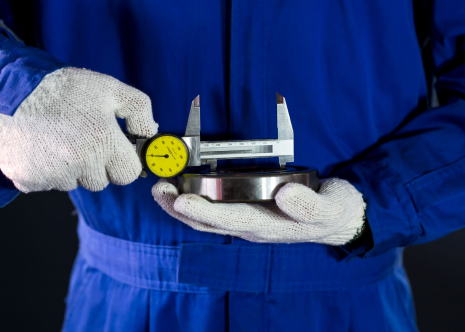Bearing failure can be prevented with proper care.
Bearings are crucial components in many machines and mechanical systems, and their failure can lead to significant downtime, costly repairs, and potential safety hazards.

Here are some key aspects of proper care that can help prevent Bearing Failure Prevention:
Lubrication: Adequate lubrication is essential for Bearing Failure Prevention longevity. Lubricants reduce friction and wear between the rolling elements and the raceways, dissipate heat, and protect against corrosion. Regularly lubricating bearings with the appropriate lubricant, following manufacturer recommendations, helps prevent excessive wear and overheating.
Contamination control: Contaminants such as dirt, dust, moisture, and debris can accelerate Bearing Failure Prevention wear and damage. Implementing measures to control and prevent contamination, such as using seals, shields, or proper enclosures, can significantly extend bearing life.
Proper installation: Correct installation techniques are crucial to ensure bearings are properly aligned, mounted, and preloaded according to manufacturer specifications. Improper installation can lead to premature bearing failure due to excessive load, misalignment, or uneven distribution of forces.
Regular maintenance: Regular inspection and maintenance routines are vital for identifying early signs of bearing problems. Monitoring for abnormal noise, vibration, temperature, or lubricant discoloration can help detect potential issues before they escalate into full-blown failures. Periodic re-lubrication and cleaning can also remove contaminants and extend bearing life.
Load management: Bearings have specific load capacity limits, and exceeding these limits can accelerate wear and lead to premature failure. Understanding and managing the loads applied to bearings, considering factors like radial and axial loads, dynamic loads, and shock loads, can help prevent overloading and ensure proper bearing performance.
Environmental conditions: Operating conditions such as temperature extremes, humidity, and exposure to chemicals can impact bearing performance. Taking into account these environmental factors and using bearings designed for specific conditions can help prevent premature failure.
Training and expertise: Ensuring that personnel responsible for bearing care and maintenance receive adequate training and possess the necessary expertise is essential. Knowledge of best practices, proper handling techniques, and troubleshooting skills can significantly contribute to preventing bearing failure.
By implementing these practices and adhering to manufacturer guidelines, the lifespan and reliability of bearings can be significantly improved, reducing the likelihood of unexpected failures and minimizing downtime and associated costs.
Conclusion:
In conclusion, Nanoprecise, bearing failure is a common problem that can cause significant damage and downtime. Don’t wait until it’s too late- take action now to protect your equipment from costly bearing failures.